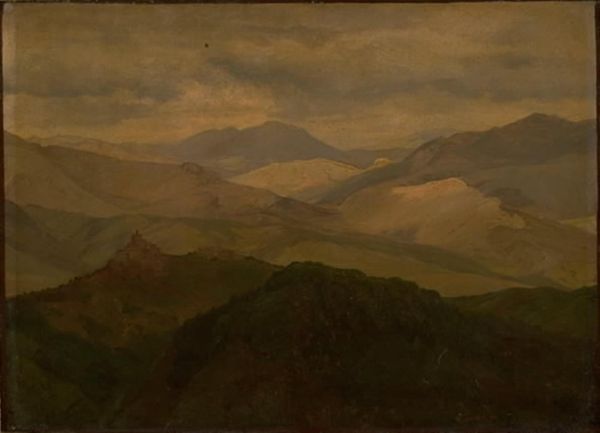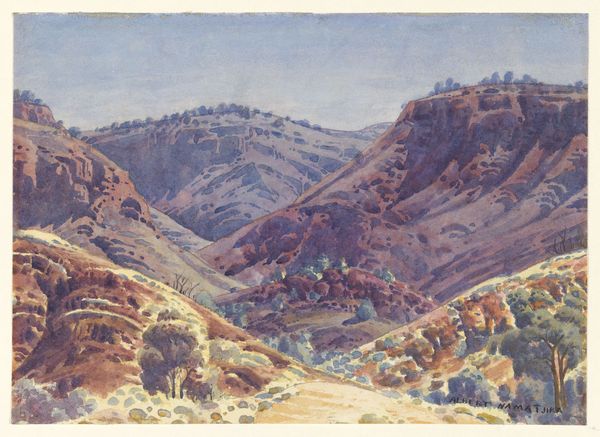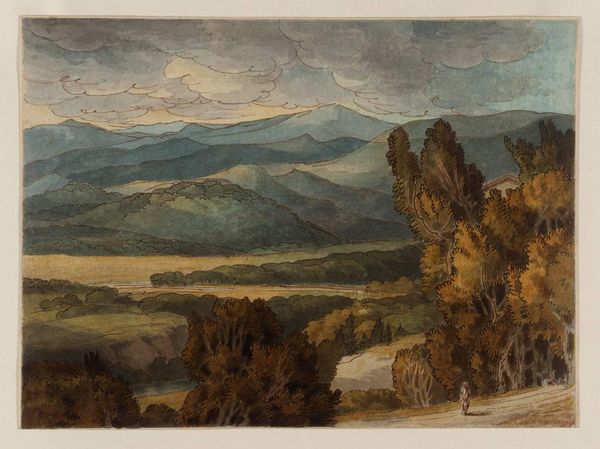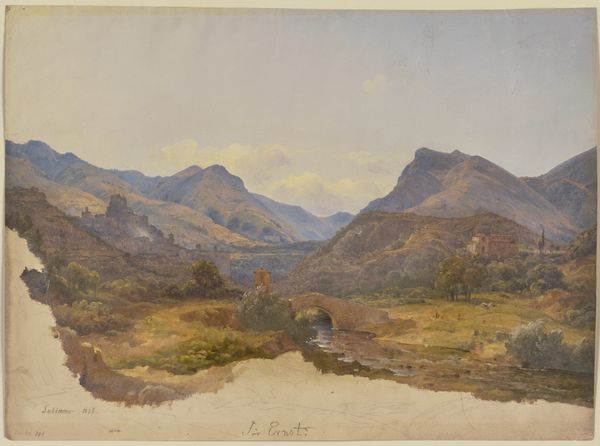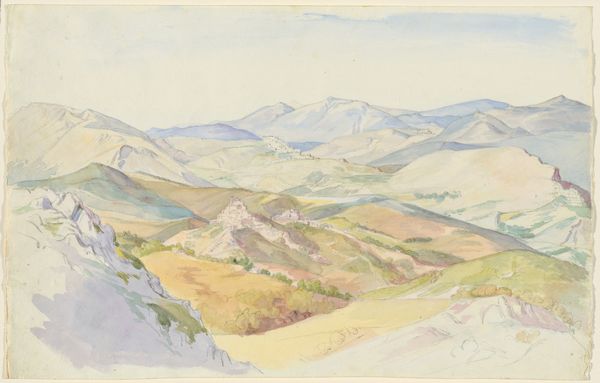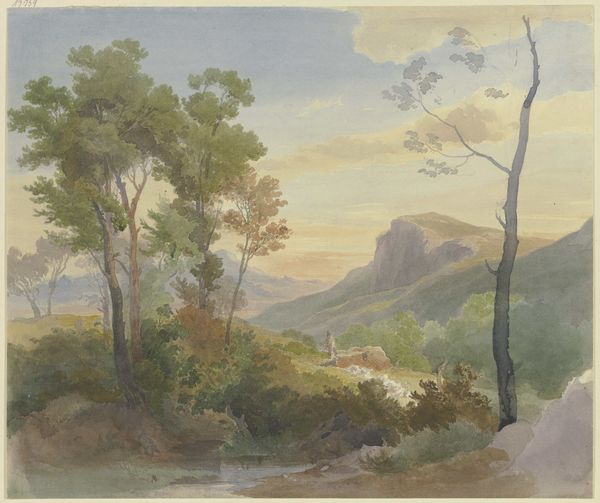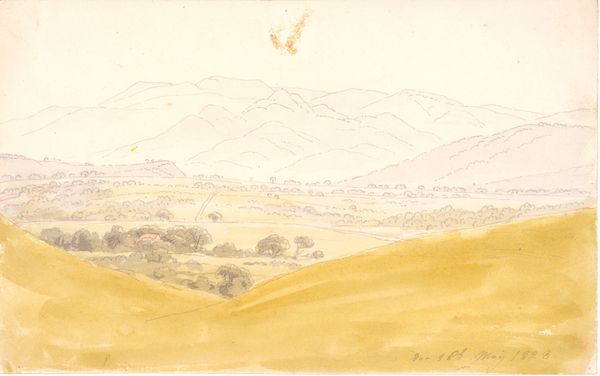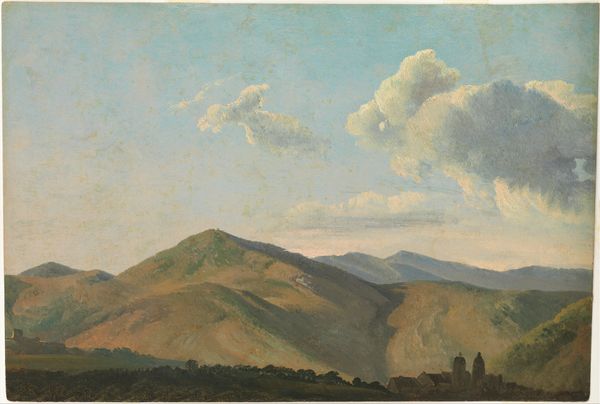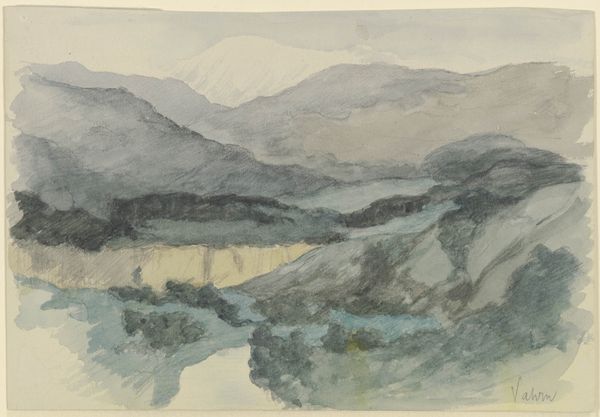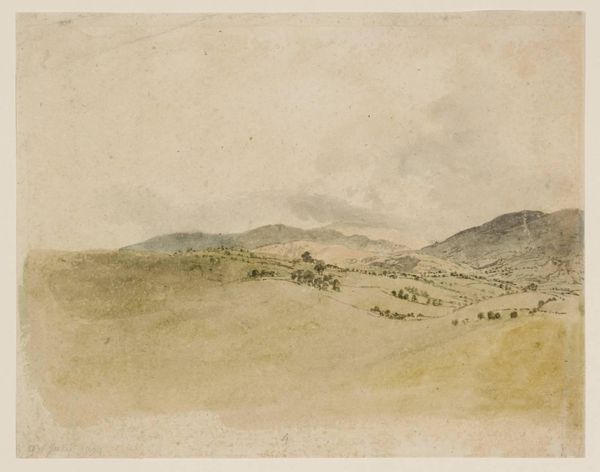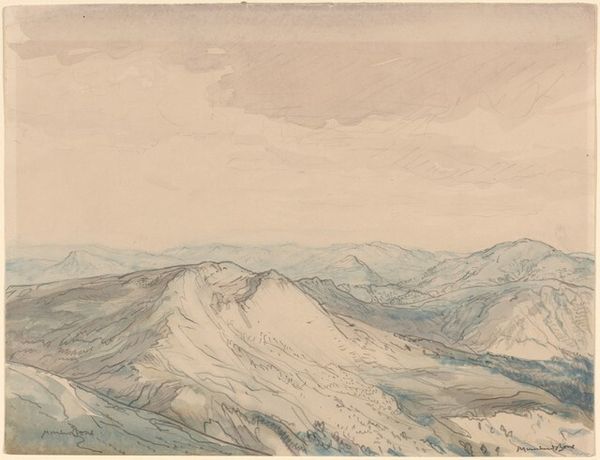
Dimensions: sheet: 17.9 × 23 cm (7 1/16 × 9 1/16 in.)
Copyright: National Gallery of Art: CC0 1.0
Curator: Here we have Stanford White’s "Blue Ridge Mountains," likely rendered around 1898. It's a watercolor drawing, probably created en plein air, capturing a serene vista. Editor: It's muted, isn't it? Almost dreamlike. It doesn't grab you with vibrant colors but rather invites you into a quiet contemplation. I feel like I’m looking at a faded memory of a peaceful place. Curator: Watercolor lends itself to that atmospheric effect. Notice how the layers create depth, a sense of receding planes, mirroring the actual mountain range. The muted tones resonate with those typically found in landscapes. The way white handles the colors suggests how mountain ranges evoke stability, permanence. Mountains symbolize timelessness in the collective conscious, so this feels… grounded. Editor: I’d say there’s more ephemeral feelings here, something transitory. See how the clouds melt into the sky, and the mountain edges blur. Perhaps it’s about how we perceive permanence. That feeling of groundedness is continually fleeting. As someone trying to capture the landscape's essence quickly, using impressionistic style I see more that there is always change going on, both small and large changes. Curator: Indeed, his impressionistic style reinforces this fluidity. He's capturing a moment, an impression, rather than aiming for precise topographical accuracy. Consider, though, the social context. Landscape art during this period frequently represented national identity. Editor: Possibly…or perhaps Stanford was just captivated by light and form that day and wanted to create that fleeting moment and to share how peaceful that space was. Not everything has to symbolize something grand. Maybe this was a day-trip meditation. A soulful record! I always find such intimacy much more appealing in art. Curator: A valid perspective! Though, even such intimate impressions carry cultural weight, reflecting a certain aesthetic ideal of natural beauty. This artwork taps into archetypal images, a primal longing for connection with the natural world, even when subtly painted like this. Editor: And I'd say we, the viewers, continuously project our longings onto it. What speaks to you, from symbols to art and the natural world in general will keep changing as well. I will certainly walk away thinking that "Blue Ridge Mountains" isn’t about the mountains at all, but my internal state reflected in those hues.
Comments
No comments
Be the first to comment and join the conversation on the ultimate creative platform.
